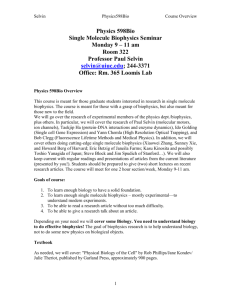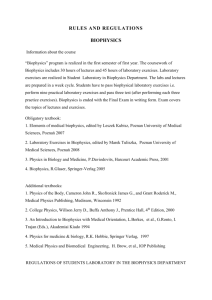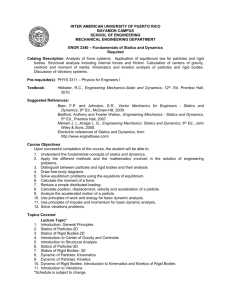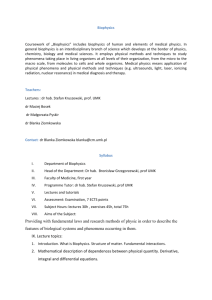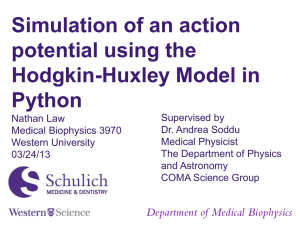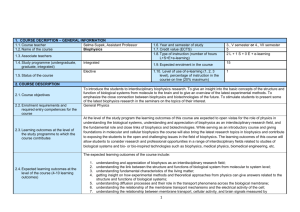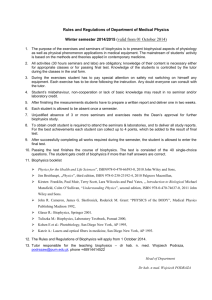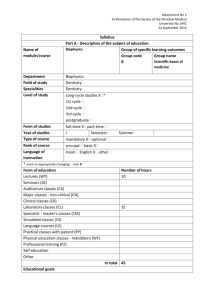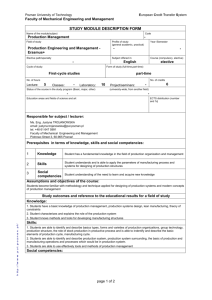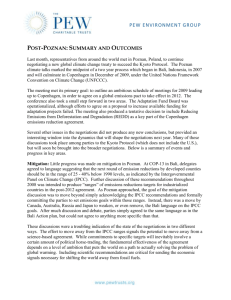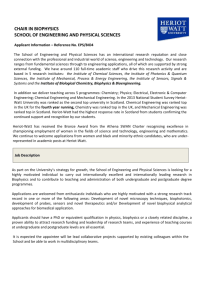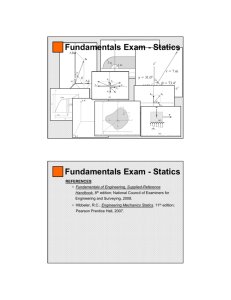Physics-pre-course-syllabus-v3
advertisement
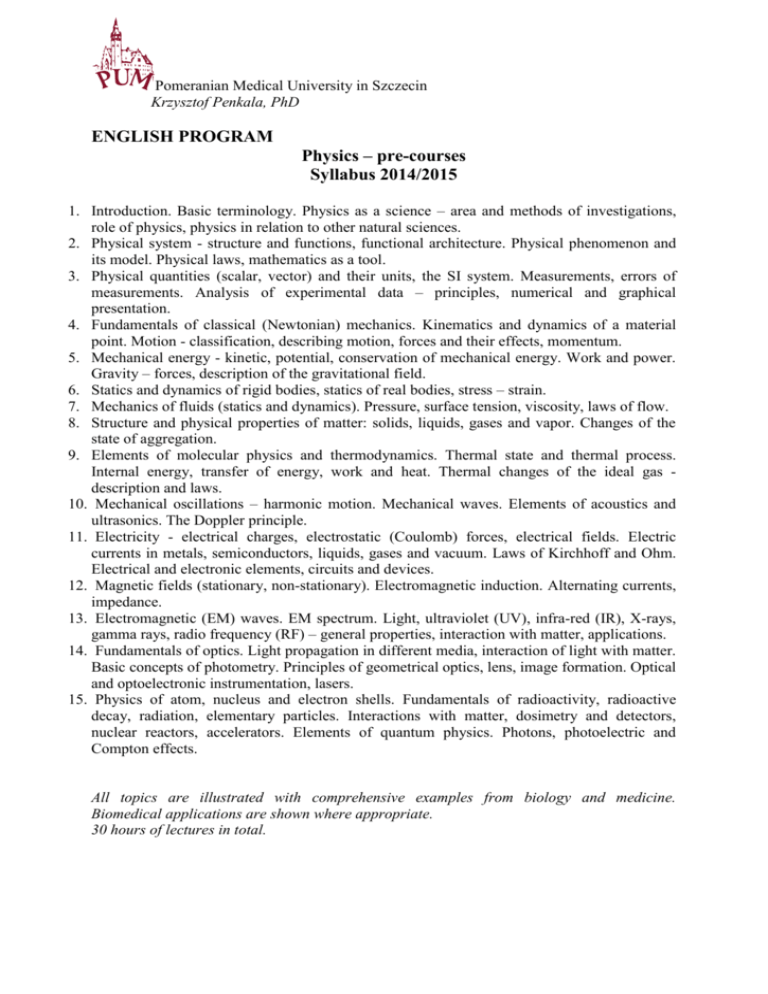
Pomeranian Medical University in Szczecin Krzysztof Penkala, PhD ENGLISH PROGRAM Physics – pre-courses Syllabus 2014/2015 1. Introduction. Basic terminology. Physics as a science – area and methods of investigations, role of physics, physics in relation to other natural sciences. 2. Physical system - structure and functions, functional architecture. Physical phenomenon and its model. Physical laws, mathematics as a tool. 3. Physical quantities (scalar, vector) and their units, the SI system. Measurements, errors of measurements. Analysis of experimental data – principles, numerical and graphical presentation. 4. Fundamentals of classical (Newtonian) mechanics. Kinematics and dynamics of a material point. Motion - classification, describing motion, forces and their effects, momentum. 5. Mechanical energy - kinetic, potential, conservation of mechanical energy. Work and power. Gravity – forces, description of the gravitational field. 6. Statics and dynamics of rigid bodies, statics of real bodies, stress – strain. 7. Mechanics of fluids (statics and dynamics). Pressure, surface tension, viscosity, laws of flow. 8. Structure and physical properties of matter: solids, liquids, gases and vapor. Changes of the state of aggregation. 9. Elements of molecular physics and thermodynamics. Thermal state and thermal process. Internal energy, transfer of energy, work and heat. Thermal changes of the ideal gas description and laws. 10. Mechanical oscillations – harmonic motion. Mechanical waves. Elements of acoustics and ultrasonics. The Doppler principle. 11. Electricity - electrical charges, electrostatic (Coulomb) forces, electrical fields. Electric currents in metals, semiconductors, liquids, gases and vacuum. Laws of Kirchhoff and Ohm. Electrical and electronic elements, circuits and devices. 12. Magnetic fields (stationary, non-stationary). Electromagnetic induction. Alternating currents, impedance. 13. Electromagnetic (EM) waves. EM spectrum. Light, ultraviolet (UV), infra-red (IR), X-rays, gamma rays, radio frequency (RF) – general properties, interaction with matter, applications. 14. Fundamentals of optics. Light propagation in different media, interaction of light with matter. Basic concepts of photometry. Principles of geometrical optics, lens, image formation. Optical and optoelectronic instrumentation, lasers. 15. Physics of atom, nucleus and electron shells. Fundamentals of radioactivity, radioactive decay, radiation, elementary particles. Interactions with matter, dosimetry and detectors, nuclear reactors, accelerators. Elements of quantum physics. Photons, photoelectric and Compton effects. All topics are illustrated with comprehensive examples from biology and medicine. Biomedical applications are shown where appropriate. 30 hours of lectures in total. Recommended literature: 1. Beiser A.: Physics. Addison-Wesley, Mass., 1991 2. Cameron J.R., Skofronick J.G., Grant R.M.: Physics of the body. Medical Physics Publishing, 1992, 1999 3. Cotterill R.M.J.: Biophysics: an introduction. Wiley, 2002 4. Franklin K., Muir P., Scott, T.: Introduction to Biological Physics for the Health and Life Sciences. E-book 5. Glaser R.: Biophysics. Springer, 2001 6. Kubisz L., Tuliszka M.: General physics: a brief guide. Karol Marcinkowski University of Medical Sciences, Poznan, 2002 7. Tuliszka M. (ed.): Biophysics. Lab. Textbook. AM Poznan, 2000 8. Tuliszka M. (ed.): Laboratory exercises in biophysics. Poznan University of Medical Sciences, Poznan, 2008 Recommended websites: WikiPremed (MCAT course) ScienceWorld (Wolfram) Oxford University Press (Physics - Cambridge Pre-U course) Ohio State University (Physics) Other Internet resources - portals and databases: NIH, NIGMS, 3D4Medical, Evicab, Medline, PubMed, Springerlink, Wikipedia Test info: 20 questions (1 point each), 5 answers (only 1 correct – single choice) Grading scale: Points 20 18-19 16-17 14-15 11-13 0-10 Grade (PL) excellent (bardzo dobry) very good (dobry plus) good (dobry) satisfactory (dostateczny plus) sufficient(dostateczny) fail (niedostateczny) Numerical 5,0 4,5 4,0 3,5 3,0 2,0



